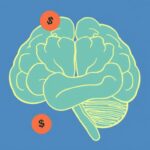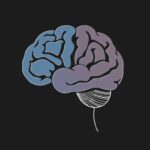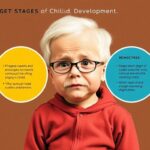Have you ever found yourself in a situation where someone clearly needed help, but you hesitated or didn’t know what to do? Or maybe you’ve noticed that when emergencies happen in busy places, often nobody steps up immediately. This puzzling human behavior is known as the bystander effect, a psychological phenomenon where individuals are less likely to offer assistance to a victim when other people are present. It’s a surprising yet common response that has fascinated psychologists, sociologists, and everyday observers alike. Understanding why we don’t help and what triggers the bystander effect can shed light on human nature and inspire us to become better, more compassionate citizens.
The bystander effect is not just a theoretical idea; it’s backed by decades of research, real-life incidents, and countless experiments. It shows how social dynamics, diffusion of responsibility, and fear of judgment play a powerful role in shaping our reactions. In this article, we will dive deep into what the bystander effect is, why it happens, famous examples, and practical ways to overcome it. Whether you’re curious about human psychology or want to know what to do in emergencies, this detailed exploration will help unravel the mystery behind why we don’t always help when help is needed.
What Is the Bystander Effect?
The bystander effect describes a social psychological situation where people are less likely to intervene in an emergency when others are present. The more bystanders there are, the less likely it is that any one of them will offer help. This seems counterintuitive because in a crowd, with many potential helpers, you might expect immediate aid. However, the opposite often occurs.
This effect stems mainly from two concepts: diffusion of responsibility and social influence. Diffusion of responsibility means that each individual assumes someone else will take action, so they feel less pressure to act themselves. Social influence involves looking to others for cues on how to behave—if no one else is reacting, a person may interpret the situation as less serious or decide it’s not their place to get involved.
Key Psychological Factors Behind the Bystander Effect
To truly understand why we don’t help during emergencies, it’s important to look at the psychological mechanisms behind the bystander effect:
- Diffusion of Responsibility: When many people witness an emergency, each assumes someone else will help, which leads to no one stepping forward.
- Pluralistic Ignorance: Individuals in a group monitor others for behavioral cues; if others seem calm or indifferent, people may misinterpret the situation as non-threatening.
- Fear of Judgment: People worry about embarrassment or making mistakes if they misread the situation or intervene incorrectly.
- Ambiguity: Unclear emergencies make it harder to decide whether help is necessary.
These factors interact, creating a scenario where bystanders do nothing even in critical moments.
Famous Examples of the Bystander Effect
History and modern times offer unfortunate testimony to how the bystander effect impacts human behavior. One of the most famous and tragic cases is the murder of Kitty Genovese in 1964.
The Kitty Genovese Case
Kitty Genovese was attacked outside her apartment in Queens, New York. Reports at the time stated that numerous neighbors heard her screams but none intervened or called the police promptly. Media coverage dramatized the story, identifying 38 witnesses who supposedly did nothing. This case sparked psychological research into the bystander effect and highlighted how urban environments can foster social isolation, even within crowds.
While later investigations suggested some details were exaggerated, the case remains a landmark in understanding social psychology and emergency response behavior.
Other Notable Incidents
Beyond the Kitty Genovese case, there have been many other examples illustrating the bystander effect:
| Incident | Year | Summary |
|---|---|---|
| Jaycee Lee Dugard’s Kidnapping | 1991 | Some neighbors reportedly noticed suspicious activity but did not report it to authorities for years. |
| Stanford Prison Experiment | 1971 | Demonstrated how authority and group dynamics influence bystander behavior in simulated distress situations. |
| London Tube Attack | 2005 | Bystanders hesitated before intervening in a terror attack, highlighting fear and uncertainty in emergencies. |
While these incidents differ, they share common themes of hesitation, diffusion of responsibility, and fear.
How the Bystander Effect Affects Everyday Life
You might think the bystander effect only occurs during dramatic emergencies, but it influences us in many everyday situations too. Let’s break down how it can show up in common scenarios:
Workplace
In offices or group projects, if an issue arises—like someone being harassed or a problem needing urgent attention—often employees hesitate to raise concerns assuming someone else will do so. This can lead to unresolved conflicts or missed deadlines.
Public Spaces
In crowded places such as malls, parks, or streets, when accidents or disturbances happen, people may look around instead of acting immediately. This hesitation can delay help for injured individuals.
Online Environments
Even in digital settings, the bystander effect applies. Cyberbullying or inappropriate behavior in forums or social media can go unchecked because users believe others will intervene or report the issue.
Personal Relationships
Among friends or family, sometimes individuals do not voice concerns or offer help because they assume someone else will take care of the problem or feel unsure how to approach it.
Factors That Increase or Decrease Helping Behaviors
Not everyone responds the same way to emergencies. Various factors influence whether a bystander is likely to intervene or remain passive. Here are some key factors that either encourage or inhibit helping behavior:
Factors Increasing Helping Behavior
- Being Alone: People are more likely to help when they are the only witness.
- Knowing the Victim: Familiarity increases empathy and motivation to assist.
- Clear Emergency: When a situation is unambiguous, bystanders are more inclined to act.
- Feeling Competent: Confidence in one’s ability to help effectively boosts intervention.
- Cultural Norms: Societies valuing collectivism and community tend to have higher rates of helping.
Factors Decreasing Helping Behavior
- Presence of Other Bystanders: More witnesses can create diffusion of responsibility.
- Ambiguity of the Situation: Uncertainty leads to hesitation.
- Fear of Danger: Risk to personal safety discourages intervention.
- Social Anxiety: Worrying about peers’ opinions or making mistakes.
- Cultural Norms: Some environments promote individualism or distrust.
Understanding these factors helps explain why we sometimes step up and other times stand back.
Psychological Experiments Exploring the Bystander Effect
Psychology researchers have conducted many experiments to unpack the mysteries of the bystander effect. Two of the most influential studies are the ones by John Darley and Bibb Latané.
The Smoke-Filled Room Experiment
In this study, participants were placed in a room that slowly filled with smoke. When alone, most people reported the smoke quickly, but when with passive others, many ignored the smoke or waited, illustrating how the presence of others inhibits action.
The Seizure Experiment
Volunteers either believed they were alone or in a group when a person they could hear through intercom had a seizure. Those who thought they were the only witness acted rapidly, while those who believed others were present delayed or did nothing.
These experiments confirm the bystander effect and highlight the power of social context in shaping behavior.
Overcoming the Bystander Effect: What Can We Do?
Knowing about the bystander effect is the first step in breaking the cycle of inaction. Here are some effective strategies to help overcome the psychological barriers and make us more likely to step in.
Recognize Your Responsibility
Understanding that bystander effect is a natural but avoidable phenomenon can motivate you to resist diffusion of responsibility. Remind yourself that if you don’t act, others may not either.
Be Specific When Asking for Help
If you’re a victim or witness, call out a specific individual: “You in the blue shirt, please call 911!” This reduces ambiguity and makes people feel directly responsible.
Increase Awareness and Training
Safety training, first aid courses, and public awareness campaigns encourage preparedness and boost confidence, making people more likely to help.
Practice Empathy and Compassion
Try to imagine yourself in the victim’s place. This emotional connection can increase motivation to intervene.
Lead by Example
When you see someone helping, it inspires others to join. Small acts of courage can ripple through communities.
Summary Table: Why We Don’t Help and How to Fix It
| Reason for Not Helping | Description | Strategy to Overcome |
|---|---|---|
| Diffusion of Responsibility | Belief that someone else will act | Assign specific responsibility to an individual |
| Pluralistic Ignorance | Confusing lack of action with non-emergency | Trust your own judgment and act |
| Fear of Judgment | Concern about embarrassment or mistakes | Prepare and practice responding to emergencies |
| Ambiguity of Situation | Unclear if help is needed | Ask questions or clarify before acting |
| Fear of Danger | Worry about personal safety | Assess risk and call for professional help if needed |
How Culture and Society Influence the Bystander Effect

It’s important to realize that the bystander effect doesn’t occur uniformly across all cultures. Research shows cultural values shape helping behaviors significantly. For example, collectivist societies, which emphasize community and mutual care, often have lower rates of the bystander effect. People feel a heightened sense of duty to intervene for others.
In contrast, individualistic cultures, which prioritize personal freedom and autonomy, may experience stronger diffusion of responsibility. However, culture is just one piece of the puzzle—local social norms, education, and personal experiences also matter greatly.
Real-Life Tips: What You Can Do When You Witness an Emergency
If you find yourself witnessing a distressing situation, here are practical steps to follow:
- Stay Calm: Take a deep breath to gather your thoughts.
- Assess the Situation: Determine if it’s safe to approach.
- Call for Help: Contact emergency services immediately if needed.
- Take Action: Provide first aid or assist within your ability.
- Enlist Help: Direct specific bystanders to assist or call authorities.
- Stay with the Victim: Offer reassurance until professional help arrives.
Having a clear plan helps reduce hesitation and boosts confidence to act.
Why Understanding the Bystander Effect Matters
The bystander effect is more than a curious psychological oddity; it reflects on fundamental aspects of society and humanity. Recognizing it allows us to take conscious steps toward building safer, more empathetic communities. It reveals the power of social influence and responsibility, and how being aware can turn passive observers into active helpers.
Moreover, by educating ourselves and others about this effect, we can encourage people to break free from the paralysis of inaction. In a world where kindness and courage can save lives, each one of us has the potential to make a real difference.
Conclusion

The bystander effect teaches us why humans sometimes fail to help during emergencies despite their natural inclination toward kindness. Powered by psychological phenomena like diffusion of responsibility and social influence, this effect explains much about our hesitation and inaction. Yet, awareness of the bystander effect equips us to consciously resist it. By understanding what causes us to hold back, recognizing our responsibility, and learning how to act decisively in emergencies, we can overcome the barriers to helping others. Whether in public, at work, or online, every one of us has the ability to be a courageous bystander—someone who chooses to help rather than stand silently by. Ultimately, by dispelling the bystander effect, we create a kinder, safer world where no one has to face hardship alone.




















